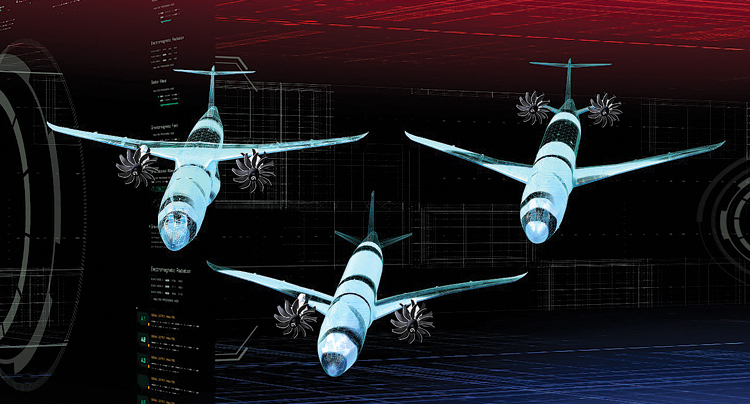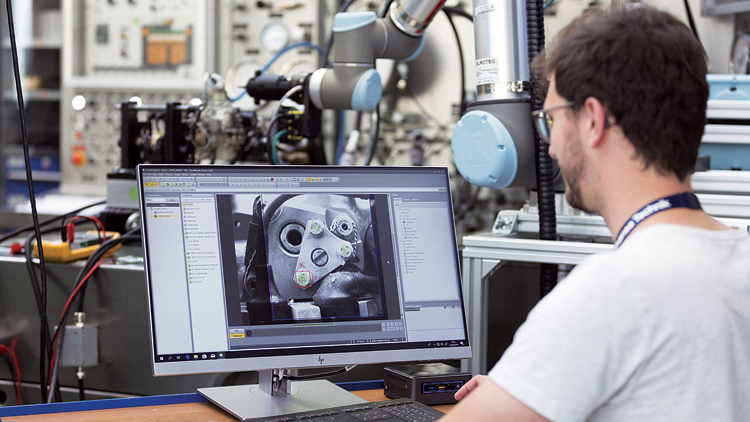INDIAN ARMED FORCES CHIEFS ON OUR RELENTLESS AND FOCUSED PUBLISHING EFFORTS

The insightful articles, inspiring narrations and analytical perspectives presented by the Editorial Team, establish an alluring connect with the reader. My compliments and best wishes to SP Guide Publications.

"Over the past 60 years, the growth of SP Guide Publications has mirrored the rising stature of Indian Navy. Its well-researched and informative magazines on Defence and Aerospace sector have served to shape an educated opinion of our military personnel, policy makers and the public alike. I wish SP's Publication team continued success, fair winds and following seas in all future endeavour!"

Since, its inception in 1964, SP Guide Publications has consistently demonstrated commitment to high-quality journalism in the aerospace and defence sectors, earning a well-deserved reputation as Asia's largest media house in this domain. I wish SP Guide Publications continued success in its pursuit of excellence.
Advances in Aero Engines
The world renowned Pratt & Whitney company has toiled for less than two decades and has produced a brilliant technological feat named the Pratt & Whitney GTF engine series

Aircraft engine manufacturers all over the world have become environmentally conscious and are striving to increase passenger comfort while enhancing the fuel efficiency of aero engines. They have started utilising blended materials including alloys and polymers to make lighter, cheaper but more powerful aero engines. Aeronautical engineers are also using ingenious technologies that have never been tried so far such as the introduction of gearboxes within the engines, use of 5G technologies linked to sensors and crunching the aircraft generated big data with artificial intelligence on a real-time basis so as to enhance fuel efficiency, reduce noise, increase the Mean Time Between Failure (MTBF) and bring in greater passenger comfort. It is worth having a look at the latest developments taking place in the field of aeronautical engineering.
GEARBOX MOUNTED ENGINES
The world renowned company Pratt & Whitney toiled for less than two decades and has produced a brilliant technological feat named the Pratt & Whitney GTF engine series wherein they have introduced a gearbox that connects with the fan in the front of the engine to the turbine at its rear. Due to the gearbox, these rotors are able to spin at different speeds with the gearbox offering a 1:3 ratio.
What this means is that if the fan in the front turns one revolution in a given time, then, with the gearbox having been interfaced in between the turbine located at the other end will revolve three times within the same span of time as was taken by the fan in front. This implies that at whatever speed the front fan spins, the rear turbine of the engine will spin at three times more speed during the same period of time. In other words, the turbine will spin faster than the fan.

It is a known fact that at slower speeds, the fan in front sucks in more air. The low speed of the fan also reduces vibrations in the engine, air turbulence and noise that is generated when the fan blades turn to suck in air. This translates into a simple fact that lighter blade materials requiring lesser machining costs/efforts can be installed in the fan. Consequently, the designers can use cheaper materials to make the engine and even install a lesser number of fan blades. This aspect reduces the manufacturing cost of the engine. Since the fan rotates at low Revolutions Per Minute (RPM), it requires less maintenance and has a lower MTBF. Consequently, it also reduces the lifetime maintenance cost of the engine.
Furthermore, the air flowing between the fan and the turbine moves through a uniquely shaped ventury which enhances the throughput of air and maximises the bypass of the air flowing between the fan and the turbine. All these technological feats of the GTF engine have resulted in the noise level reduction by about 25 per cent. Its carbon footprint has been reduced by 75 per cent. Interestingly, this engine has already achieved emission norms up to 50 per cent levels of what the Regulatory Standards have stipulated and promulgated by the Committee on Aviation Environment Protection (CAEP).
COUNTER-ROTATING FAN
Another interesting and innovative technology being developed entails the mounting of twin fans in the front. One fan spins clockwise and the other anti-clockwise. This enables the fans to spin at lower speeds, but are able to suck in much more air than a single fan assembly of a conventional engine that is operating at a comparatively higher RPM. The large amount of air sucked in by the two counter-rotating fans enables the engine designers to reduce the number of engine blades needed to push the air rearwards in each individual fan. This will reduce the cost of manufacturing the engine.
As the air is now smoothly sucked in through these counterrotating fans into the engine, it will generate less air turbulence, low noise and vibrations. This translates to lesser wear and tear of the engine. It also permits the use of lighter or blended materials or alloys that ultimately reduce the research and development costs, the capital expenditure for the procurement of the engine and the MRO costs of the power plant during its life cycle. The low noise and vibrations certainly provide a calmer and more enjoyable flight experience for passengers.
HYBRID POWERED ENGINES
As time progresses, all technologies are shifting from burning fossil fuels for generating power to using electricity derived from sustainable means. Aircraft too will follow suit. The Boeing 787 has successfully used hybrid power for its operations. It is a known fact that a battery has a storage density rating of 400 to 450Wh/kg whereas Aviation Turbine Fuel (ATF) offers a storage density of 12kWh/kg. So, it can be seen that the battery is any day more efficient in providing electricity to power the aircraft, but, there is a problem. The weight of the battery is much higher than the amount of ATF needed to generate the same amount of energy as by a battery.
Therefore, the aeronautical engineers have identified that, to offset the excess weight of the battery which is installed in the aircraft to generate power, they have to reduce the airframe weight by about 20 per cent. This redesigning of the airframe to offset the opportunity cost of deploying energy-efficient batteries versus carrying ATF in the wings, is a research worthy subject with guaranteed profitability in the future.

It can be articulated with certainty that with each passing year, the dead-weight of the battery is being reduced as more and more resources are being invested into the development of lighter and more efficient batteries. This aspect is also being tried out by Airbus and Rolls-Royce through their hybrid-electric engines, where, after the aircraft has taken off, the main power or electricity from batteries is utilised rather than getting the complete power requirements from the ATF consuming engines.
HEAT RECOVERY
Of all the energy that is generated by an aircraft engine, a substantial amount of it is lost by way of heat in the exhaust. Aeronautical engineers have successfully tested the introduction of double chambers within the engine in which hot gases emanating from the first chamber gush into the subsequent one and generate more thrust once ATF is pumped in.
INFORMATION AND COMMUNICATION TECHNOLOGY
With the advent of sensors that are able to read the performance parameters of the assemblies, sub-assemblies and components of the engines on a real-time basis, power management has undergone a paradigm shift. The flight performance readings produced by the sensors will be quickly transmitted to the computing systems located either onboard or on the Earth using 5G and Internet of Things (IoT) technologies.
These inputs will then be analysed using big data analytics tools along with artificial intelligence algorithms and provide near real-time flying instructions to the aircraft or to the pilot to optimise its actual performance. This will be done to minimise fuel burn, maximise thrust for the given itinerary based upon the environmental conditions and the need for queueing up or loitering at the airport where the aircraft will land. This also enhances the MTBF, reduces the quantum of MRO costs of the aircraft. It also cumulatively reduces the life cycle operating costs of the engine and makes the airline more profitable.
SUNDRY AVIATION TECHNOLOGIES
Most of the aircraft designers are now utilising 3-D printing technologies to produce components and sub-assemblies needed to design and build engines or their prototypes. This is done to reduce the cost of engine prototype during the research and designing stage and for making spares to be used during MRO as this reduces the inventory carrying costs.
Biofuel additives to reduce ATF costs and environmental emissions are also being experimented in a big way. The aim is to enhance the specific impulse produced per gram of conventional and ATF blended with biofuel. It thus, reduces the flying costs and the pollution footprint of the aircraft.
The other aspects include the use of magnetic bearings where the surface-to-surface contact between moving surfaces is minimised. As a result, wear and tear of moving parts will be reduced considerably. Another option of generating electricity involves the use of Argon gas to generate plasma which ultimately generates a stream of electrons. These electrons will be needed to augment the energy being produced by aero engines. This aspect however, is still in a nascent stage and will take some time to mature. Thus it can be seen that considerable work is being carried out globally across multiple aspects to improve the performance of aero engines.





